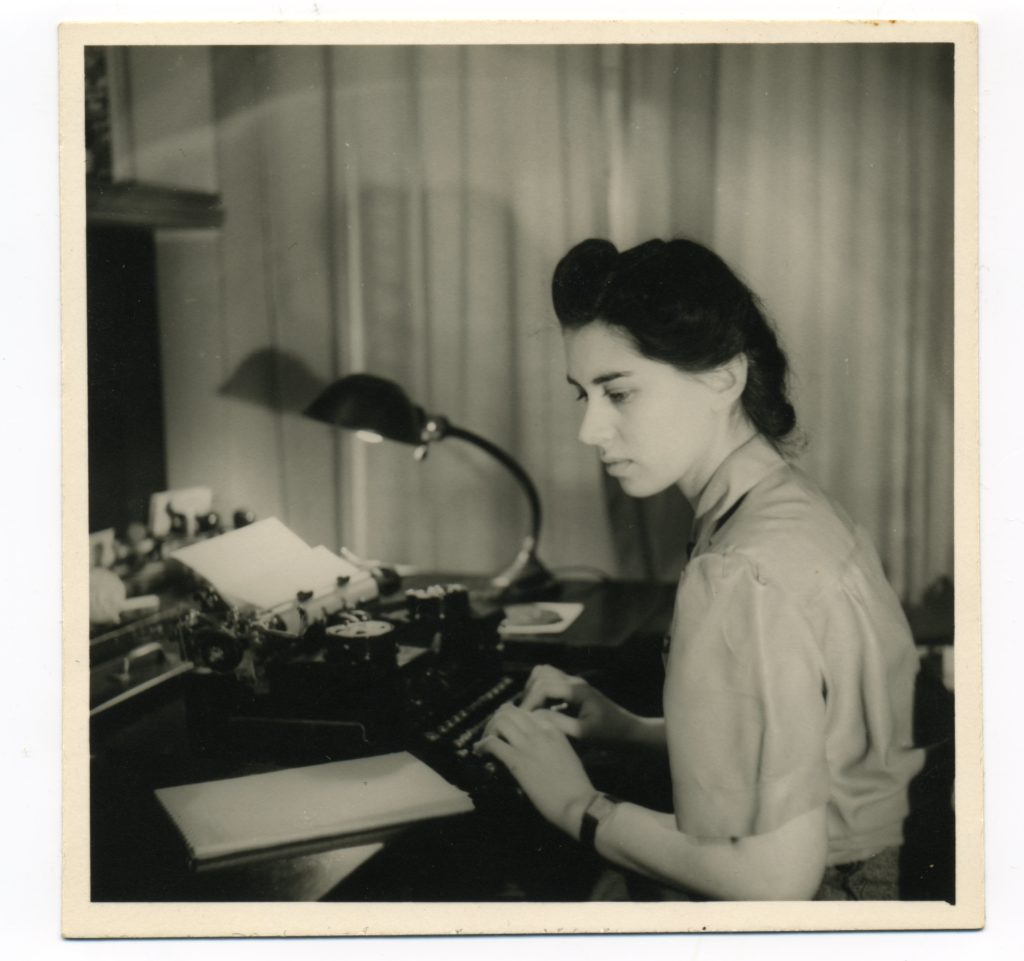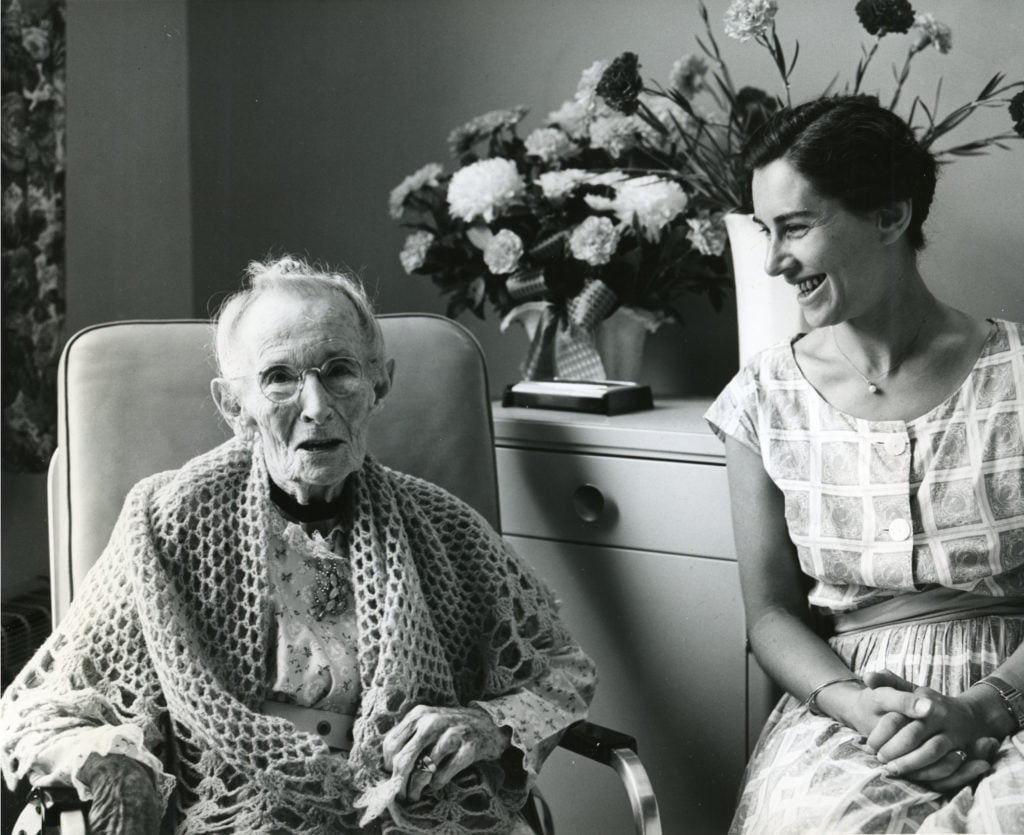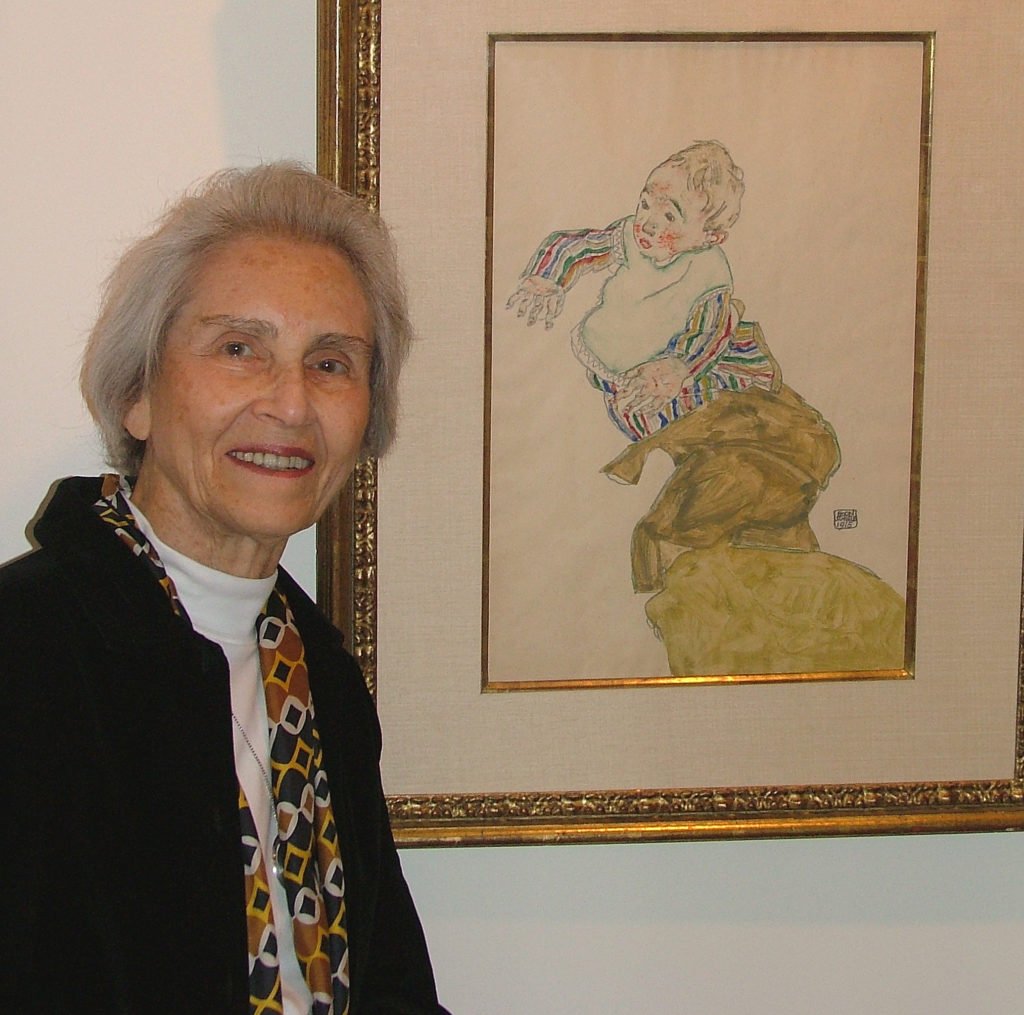People
Art Dealer Hildegard Bachert, Who Championed Käthe Kollwitz and Grandma Moses, Has Died at Age 98
Bachert, who fled Nazi Germany at 19, was known for her passionate advocacy for the artists she loved at Galerie St. Etienne.

Bachert, who fled Nazi Germany at 19, was known for her passionate advocacy for the artists she loved at Galerie St. Etienne.

Rachel Corbett

Hildegard Bachert, an indefatigable art dealer who brought to the fore Grandma Moses, Paula Modersohn-Becker, Käthe Kollwitz, and other under-known artists through her 80-year career at New York’s Galerie St. Etienne, died yesterday at age 98.
Bachert, who was born in Mannheim, Germany, in 1921, got her start in the industry as a gallery secretary after fleeing the Nazi regime as a teenager and settling in New York. She was 19 when she met the Austrian art dealer Otto Kallir, another refugee, who had shuttered his gallery in Vienna, the Neue Galerie, and reopened in New York under the name Galerie St. Etienne. Kallir agreed to give Bachert a job on the condition that she teach him English.
At the time, French art was in vogue in the city but Kallir largely promoted the work of Egon Schiele, Max Liebermann, Oskar Kokoschka, and other Austrian and German artists. In 1941, the gallery hosted Schiele’s first solo show in the US. It was, Bachert said in her memoir, “a total dud.”
Two years later, she convinced Kallir to mount the gallery’s first exhibition of works by Kollwitz, which fared better. “One of the first artists I was able to sell was Kollwitz,” Bachert said. “Kallir always said, ‘It’s because you identify with her. You know her language, where she comes from.’ Indeed, I did identify with Kollwitz, much more so than with Schiele or Klimt.”
“Hildegard, simply as a woman with a significant influence in a major 57th Street gallery, was largely responsible for the relative gender balance of our program,” said Otto Kallir’s granddaughter Jane Kallir. “She pushed the gallery to give Paula-Modersohn Becker her first one-person American show in 1958, and her devotion to Käthe Kollwitz was legendary. She was one of the top Kollwitz experts in the world.”

Hildegard Bachert, at right, with Grandma Moses on her 100th birthday in 1961. Photo by Otto Kallir, courtesy of Galerie St. Etienne.
Around that time, Kallir also discovered an elderly “farmwife” who painted extraordinary country scenes from her home in rural upstate New York. He sent Bachert to visit the woman, who would come to be known as Grandma Moses. It was “love at first sight,” Bachert said of the encounter.
Moses was “at ease with everyone. She had intrinsic manners, a perfect sense of tact and amazing self-possession. The first thing she asked when I visited was, ‘How are your folks in New York? How is everybody?’ She really wanted to know. Then of course, I heard all about her family. We developed a very close relationship. She was like my own grandmother to me.”
Otto Kallir died in 1978 and Bachert became co-director of the gallery with Jane Kallir. Together they worked to preserve St. Etienne’s founding principles: “The gallery isn’t about buying and selling art like a commodity. We don’t show art that we don’t believe in. We want to be as knowledgeable as possible about what we do.”
Still, it had to adapt to changing market forces, such as art fairs. “Otto Kallir wouldn’t have dreamed of participating in an art fair,” Bachert wrote. “He didn’t believe art should be displayed like merchandise, and neither, in principle, do Jane and I. We resisted exhibiting at fairs for many, many years, but they have become a necessity. Even I like Art Basel, in Switzerland.”
In the 1980s, “all of a sudden, fin-de-siècle Viennese art was ‘hot,'” and Bachert found herself hiring her own secretary. “When our new secretary first referred to me as ‘my boss,’ I did a double-take!” she said. The gallery loaned works to the Museum of Modern Art and consulted on its “Vienna 1900″ show—”probably the most exciting moment of my entire career,” Bachert recalled in her memoir. The following decade saw a booming interest in Schiele, who was the subject of a show at the National Gallery of Art in Washington, DC, and “prices started going through the roof.”

Hildegard Bachert with a work by Egon Schiele. Courtesy of Galerie St. Etienne.
In 2001, the collector Ronald Lauder opened a museum in New York and named it after Otto Kallir’s original Vienna space, the Neue Galerie. “Never in my wildest dreams would I have thought that in my lifetime there would be a museum of Austrian and German art in New York,” Bachert said.
Bachert moved to Vermont last year, but continued her work with the gallery until her final days. “I could have retired 20 years ago, but I can’t unglue myself,” she told the New York Times in 2015. “I’m too connected. It’s my baby.”
“The thing that I just keep coming back to is how principled she was,” Jane Kallir said. “Art has become such a big business, a corporatized enterprise, which it really never was for almost the entire 20th century. People think of dealers as promoters, charlatans, opportunists. Hildegard was none of those things. She had this enduring sense of a mission beyond herself. She was really, really dedicated in service to the art.”